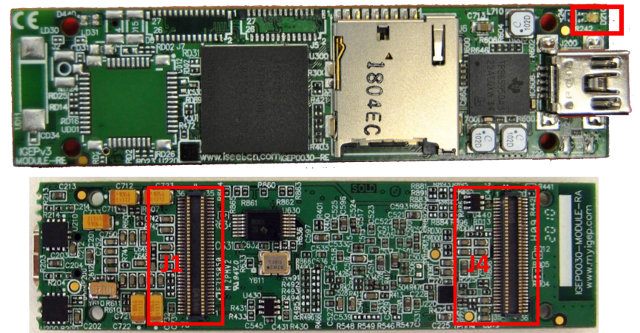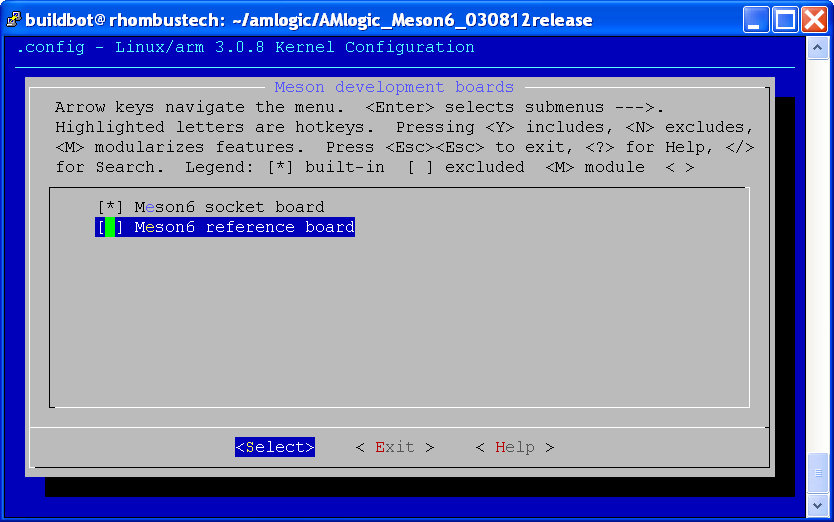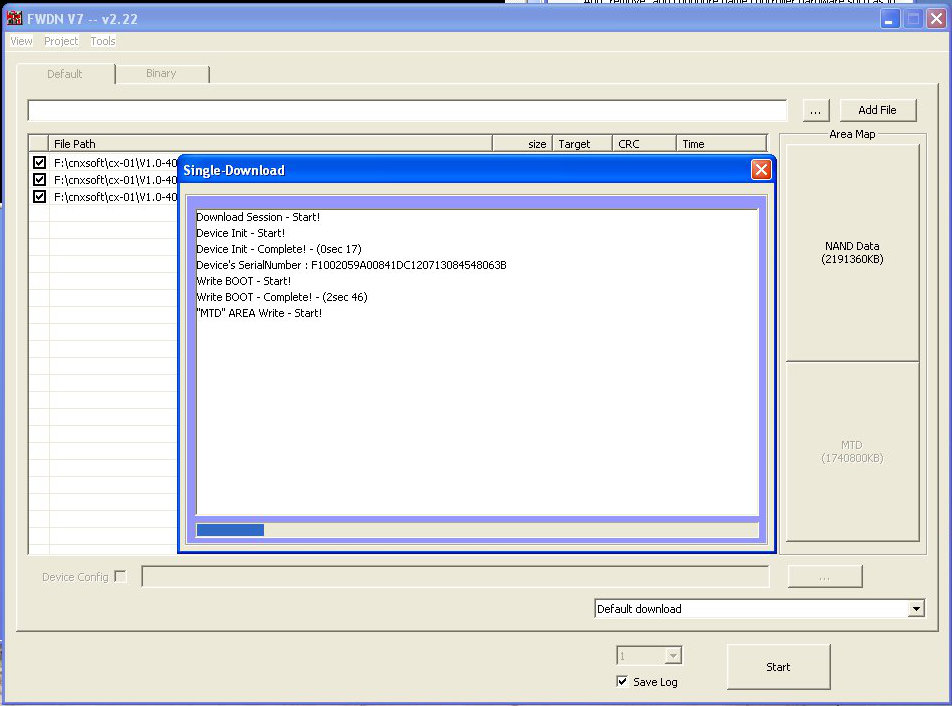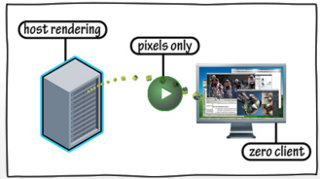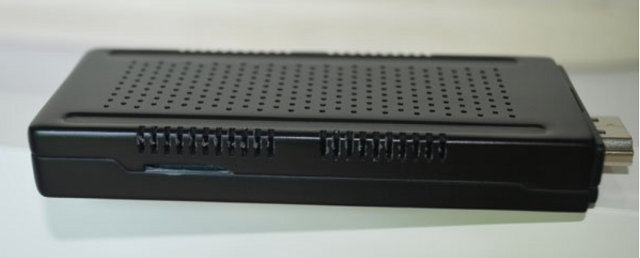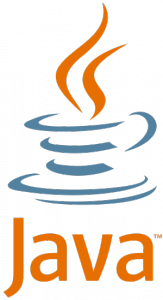ISEE, the manufacturer of the IGEPv2 board, has recently announced 2 new industrial grade computers on module based on TI Sitara AM3703 Cortex A8 Processor: IGEP COM ELECTRON – AM3703 with 256 MB RAM / 512 MB Flash – 59 Euros IGEP COM SPIN – AM3703 with 64 MB RAM / 128 MB Flash – 49 Euros Here are the specifications of IGEP COM ELECTRON module: CPU – Texas Instruments AM3703 @ 1GHz with L1 cache (112 KB (DSP) / 64 KB (ARM)) and L2 cache (96 KB (DSP), 256 KB (ARM)) System Memory – 256 MB Mobile DDR @ 200 MHz (32-bit) Storage: 512 MB NAND FLASH On board micro-SD socket Connectors: 1 x USB 2.0 OTG interface + USB mini-AB connector 1 x MICRO-SD socket 2 x EXPANSION 70-pin connector Device: 1 x USB 2.0 HOST (connector NOT included) 1 x DOUBLE LED INDICATOR Expansion connectors – 2 […]
AMLogic Releases AML8726-MX Linux 3.0.8 Source Code
While doing a Google search to locate the open Linux page of AMLogic, I noticed another link reading “Amlogic AML8726-MX Linux kernel code released“. Interesting. So AMLogic appears to have released the kernel source code for their latest dual core Cortex A9 processor at the beginning of August and the tarball is available from their open source site: kernel-common-2012-08-03-git-a63244fb9c.tar.gz. A github user (fards) also imported the code to github, but he’s not affiliated with AMLogic, so don’t expect commits from AMLogic there. Let’s retrieve it:
|
1 |
git clone git://github.com/fards/AMlogic_Meson6_030812release.git |
AML8726-MX is codenamed MESON6 in the source code, and the code is in arch/arm/mach-meson6/, but let’s see if we can find a config file in arch/arm/configs. Yes! There are 4: meson6_android_defconfig – Android config file (Single core) meson6_defconfig – Linux config file (Single core) all Android config disabled. meson6smp_android_defconfig – Android config file with smp (symmetric multiprocessing) support meson6smp_defconfig – Config file with smp […]
$60 Rockchip RK2906 (Cortex A8) Android 4.0 Tablets
About 2 months ago, I received a 7″ capacitive tablet powered by WonderMedia WM8850 Cortex A9 processor and running Android 4.0. The WM8850-MID tablet cost me $76 at the time, and was available for as low as $72, which I found extremely cheap for a tablet with those specs. Since then AllWinner A13 processors have started to be used in tablets with similar specs – but without HDMI output – that sell for as low as $55. At the Hong Kong electronics Fair in April 2012, Rockchip announced several processors including the RK2906, which I was led to believe would be a cut-down version of ARM Cortex A8 RK2918 without HDMI, but it appears not to be the case. And today, I received a “Deal Alert” for an RK2906 Android 4.0 tablet that sells for $59.99 including shipping on Focalprice and could be an alternative to A13 tablets, especially if […]
How to Upgrade Firmware for CX-01 mini PC
[WARNING: Although these instructions worked with my hardware (CX-01 bought via Pandawill), it appears to break some CX-01 devices (See comments section), so use these instructions with care] Pandawill finally managed to release CX-01 firmware (234 MB) about a week ago. This firmware can be used for devices with 4 or 8 GB flash memory (2 separate directories). You only need to update the firmware if your device has some serious problems, or if CX-01 gets a proper firmware update (we can always dream…). Once you’ve downloaded ROM for android TV CX-01.rar in a Windows PC, extract it and enter ROM for android TV CX-01 directory. You’ll find 1 file and 1 directory: V1.0-4096-8189_en – Directory for 4GB firmware V1.0-8192-8189_en – Directory for 8GB firmware FWDN_8923.zip – Telechips tools to burn the firmware to flash Extract FWDN_8923.zip, go to vtcdrv directory and install the driver corresponding to your operating system. […]
Firefox OS Running on the Raspberry Pi
Oleg Romashin, a Nokia engineer, has been working on porting Firefox OS (previously known as Boot 2 Gecko) to the Raspberry Pi, and has uploaded a YouTube video showing a Firefox OS running on the device, including a WebGL teapot demo running at 60 fps. This Firefox OS build is based on Debian Squeezy, with plain EGL rendering, no Widget Toolkit backends and no X11. Some parts do not look very smooth yet, but this demo looks promising. If you want to try it yourself, you can download the WebGL teapot build. Mozilla patches with LinuxGL widget backend are also available at http://hg.mozilla.org/users/romaxa_gmail.com/embedipc_queue/file/linuxglpure. If you have the N9 smartphone or Beagleboard, it looks like you can also try this. Check files in http://romaxa.info/b2g/.
Teradici Announces PCoIP Tera2 Host and Zero Client Processors
Earlier this year, I discovered PCoIP (PC over IP) , a remote desktop protocol that provides basically the same functionality as VNC or RDP, but promises better performance on low end hardware by using different compression methods depending on the content on the display. Teradici, the company behind this technology, has today announced its next-generation Tera2 processors specifically designed to handle PCoIP by hardware: TERA2220 dual display host processor – 150 Mpps (Megapixels per seconds), supports up to two displays at 1920×1200 resolution, or one at 2560×1600. TERA2240 quad display host processor – 300 Mpps, supports up to four displays at 1920×1200 resolution, or two at 2560×1600. TERA2321 dual display zero client processor TERA2140 quad display zero client processor Both Tera2 host processors include advanced security features such as AES-256 and NSA Suite B security protocols, and are capable of refreshing the full display at up to 60fps. Tera2 PCoIP zero client […]
Dual Core Rockchip RK3066 mini PC Now Available for $88.88
Yesterday, I wrote about the first proper dual core Cortex A9 mini PC based on Rockchip RK3066, but it seemed only available to wholesalers, and I was not really sure it was ready for prime time. But today, one of my reader (Anders) pointed to a vendor selling the device on Aliexpress, and I found out it was sold for the lucky price of $88.88 + shipping. The picture above (Source: Aliexpress) is the first I’ve seen that looks real, and makes me feel a bit better about this device. The specs listed in Aliexpress are basically the same as I posted yesterday, except we learn that the Wi-Fi chip is Ralink Realtek 8188, more codecs are listed (but I would not read too much into that), and the casing has gone on a diet and shrunk to 8.8 * 3.5 * 1.2cm (vs 10.1 x 3.8 x 1.3cm yesterday). […]
Oracle releases JDK for Linux ARM (Soft-Float Only)
Oracle announced the availability of JDK 7 Update 6 which introduces a JDK for Linux on ARM v6 and v7 architecture. This JDK is aimed at “general purpose” ARM systems, such as ARM micro-servers and ARM development platforms. This new JDK for Linux on ARM is licensed under the Oracle Binary Code License, and can be downloaded at no cost for development and production use on general-purpose platforms. For embedded use such as an industrial controller or a kiosk appliance, a commercial license would be required. Here’s how Oracle summarizes the ARM Linux JDK features: This port provides 32-bit binary for ARMv6 and v7, with full support for Swing/AWT, both client (C1) and server (C2) compilers and runs on most Linux distributions. One caveat is that the current binary is softfloat ABI only, so it won’t work with (for example) the Raspbian distribution which uses the hardfloat ABI. We are […]


